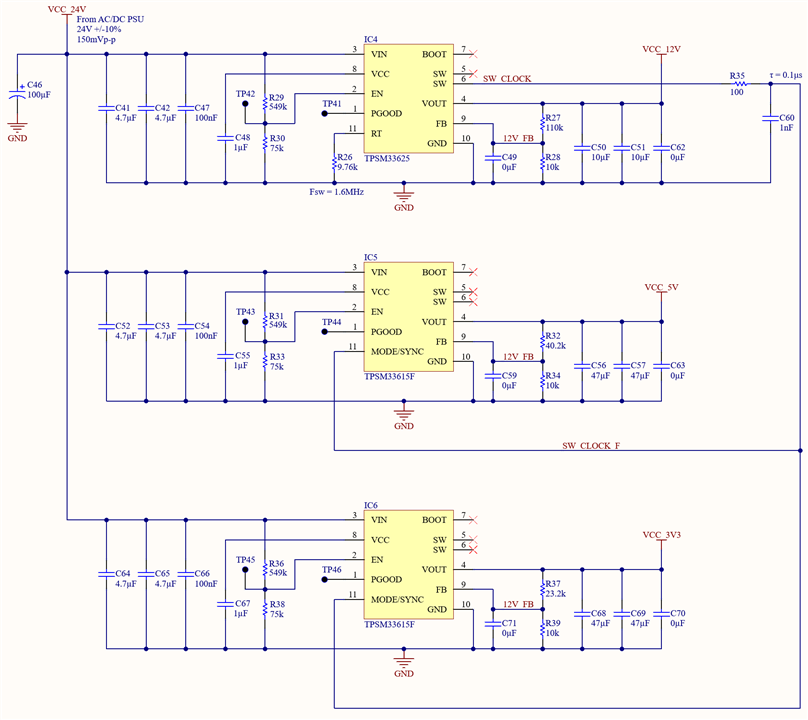Other Parts Discussed in Thread: TPSM33625, TPS62810,
Tool/software:
Hello,
The TI Application Note "Different Strategies for Synchronization" (SLVAEG8) gives a number of different strategies for synchronising clocks in multiple buck converters. I would like to use the strategy described under "1.4 Synchronization to the Other DC/DC Converter", where the principle is to use the SW node from one buck converter as a clock source for others. Thereby ensuring predictable, out-of-phase synchronisation. I have chosen the TPSM33625 for the "master" buck converter, and TPSM33615F for two "slave" buck converters, as shown in the overview below (no external components shown):

Current requirements of each power rail:
- VCC_12V: 1.5A (constant)
- VCC_5V0: 1.3 A (audio amp supply, normally very low-load, with occasional peaks to max. load)
- VCC_3V3: 1.1A (constant)
Simplicity and EM noise control are both important in this design, which perhaps helps to explain some of the design decisions. I'll be sure to respect the layout guidelines in the datasheet when I get to that.
I have a few questions about this:
- The application note actually uses the TPS62810 in the example, and says that "TPS62810 synchronization is designed in a way that the switching is out of phase". Is this approach also supported by the TPSM336* family in the way it's wired up above?
- I chose 1.6MHz as the switching frequency using Table 7.1 in the datasheet. By forcing the 5.0V power rail to switch at 1.6MHz, even when operating under very light load conditions, is it correctly understood that the TPSM33615F device will be operating in FPWM mode? (i.e. With reverse current through the inductor?)
- Assuming my calculation are correct, the minimum on time should be respected, so would it be correct to assume that the device will not enter Valley Current Mode Operation (and any noise unpredictability that may result from that)?
- Is clocking the TPSM33615F at 1.6MHz under very low-load conditions supported indefinitely? Is there any way to estimate the wasted power?
Many thanks for any help offered.
Best regards,
Eddie



